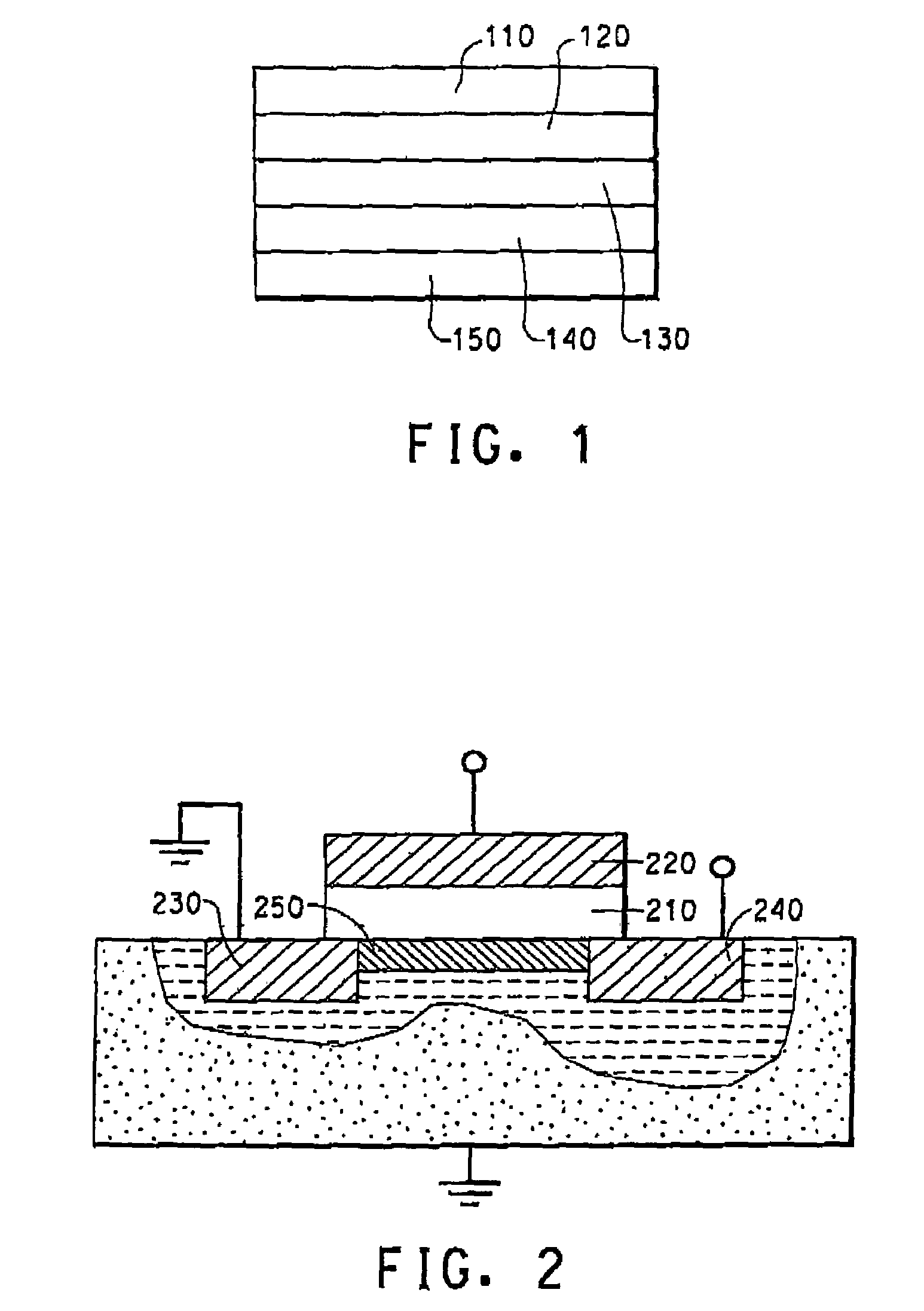Organic formulations of conductive polymers made with polymeric acid colloids for electronics applications, and methods for making such formulations
a technology of conductive polymers and colloids, which is applied in the direction of conductive materials, tyre parts, pigmentation treatment, etc., can solve the problems of corrosion within the device, low ph of aqueous electrically conductive polymer dispersions synthesized with water soluble polymeric sulfonic acids, and reduced stress li
- Summary
- Abstract
- Description
- Claims
- Application Information
AI Technical Summary
Benefits of technology
Problems solved by technology
Method used
Image
Examples
example 1
[0139]This example illustrates the reformulation of [poly(3,4-ethylenedioxythiophene)] / Nafion® with ethylene glycol to form an organic formulation, “PEDT / Nafion®-EG”, and the effect this has on electrical conductivity. A 25% (w / w) aqueous colloidal dispersion of perflurorethylenesulfonic acid with an EW of 1050 was made using a procedure similar to the procedure in U.S. Pat. No. 6,150,426, Example 1, Part 2, except that the temperature was approximately 270° C. The dispersion was diluted with water to form a 12.5% (w / w) dispersion for the polymerization.
[0140]To a 500 mL reaction kettle fitted with an electrically controlled propeller type-stirring paddle were added 63.75 g (7.28 mmoles of Nafion® monomer units) of the Nafion® polymer dispersion, 125 g de-ionized water, 45 mg (0.087 mmoles) ferric sulfate (Aldrich, Cat. #307718), and 0.125 mL (1.49 mmoles) 37% (w / w) aqueous hydrochloric acid (Ashland Chemicals, Columbus, Ohio.; cat #3471440) and the reaction mixture stirred at 200 R...
example 2
[0144]This example illustrates the reformulation of polypyrrole / Nafion® with dimethylacetamide to form an organic formulation, “PPy / Nafion®-DMAC”, and the effect on electrical conductivity. The Nafion® was the same as used in Example 1.
[0145]To a 500 mL reaction kettle fitted with an electrically controlled propeller type-stirring paddle were added 64.6 g (7.38 mmoles of Nafion® monomer units) of the Nafion® polymer dispersion, 125 g de-ionized water, 62 mg ferric sulfate (Aldrich, Cat. #307718), and 0.175 mL (2.10 mmoles) 37% (w / w) aqueous hydrochloric acid (Ashland Chemicals, Columbus, Ohio; cat #3471440). The reaction mixture stirred at 200 RPM. After 5 minutes of stirring, an addition of 0.253 mL (3.58 mmoles) of freshly distilled pyrrole (Across Organics, cat. #157711000) resulted in a rapid color change of the reaction mixture from clear to dark green. After another 5 minutes of stirring, a slow injection of an oxidizing solution made of 1.01 g (4.24 mmoles) sodium persulfate ...
example 3
[0149]This example illustrates the reformulation of polypyrrole / Nafion® with ethylene glycol (EG) to form an organic formulation, “PPy / Nafion®-EG”, and the effect on electrical conductivity.
[0150]0.7640 g of the wet solid prepared in Example 2, which contains about 0.18 g dry solid and 0.584 g mixture of water and n-propanol, was mixed with 9.234 g ethylene glycol (Fluka Chemika). The mixture was stirred with a magnetic stirrer and quickly formed a smooth dispersion. The reformulated dispersion on contains about 1.8% (w / w) PPy / Nafion®, 92.34% ethylene glycol. Couple drops of the reformulated dispersion was then spread on a microscope slide which was placed in a vacuum oven set at 50° C. until deposited films were dried. The oven was constantly pumped in a small amount of nitrogen. The temperature was then raised to 85° C. and baked for one hour. Resistance of the baked films having thickness of ˜4 μm was measure for resistance as described above. Average conductivity was 8.5×10−2 S / ...
PUM
| Property | Measurement | Unit |
|---|---|---|
| boiling point | aaaaa | aaaaa |
| electrical conductivity | aaaaa | aaaaa |
| conductivity | aaaaa | aaaaa |
Abstract
Description
Claims
Application Information
 Login to View More
Login to View More - R&D
- Intellectual Property
- Life Sciences
- Materials
- Tech Scout
- Unparalleled Data Quality
- Higher Quality Content
- 60% Fewer Hallucinations
Browse by: Latest US Patents, China's latest patents, Technical Efficacy Thesaurus, Application Domain, Technology Topic, Popular Technical Reports.
© 2025 PatSnap. All rights reserved.Legal|Privacy policy|Modern Slavery Act Transparency Statement|Sitemap|About US| Contact US: help@patsnap.com



